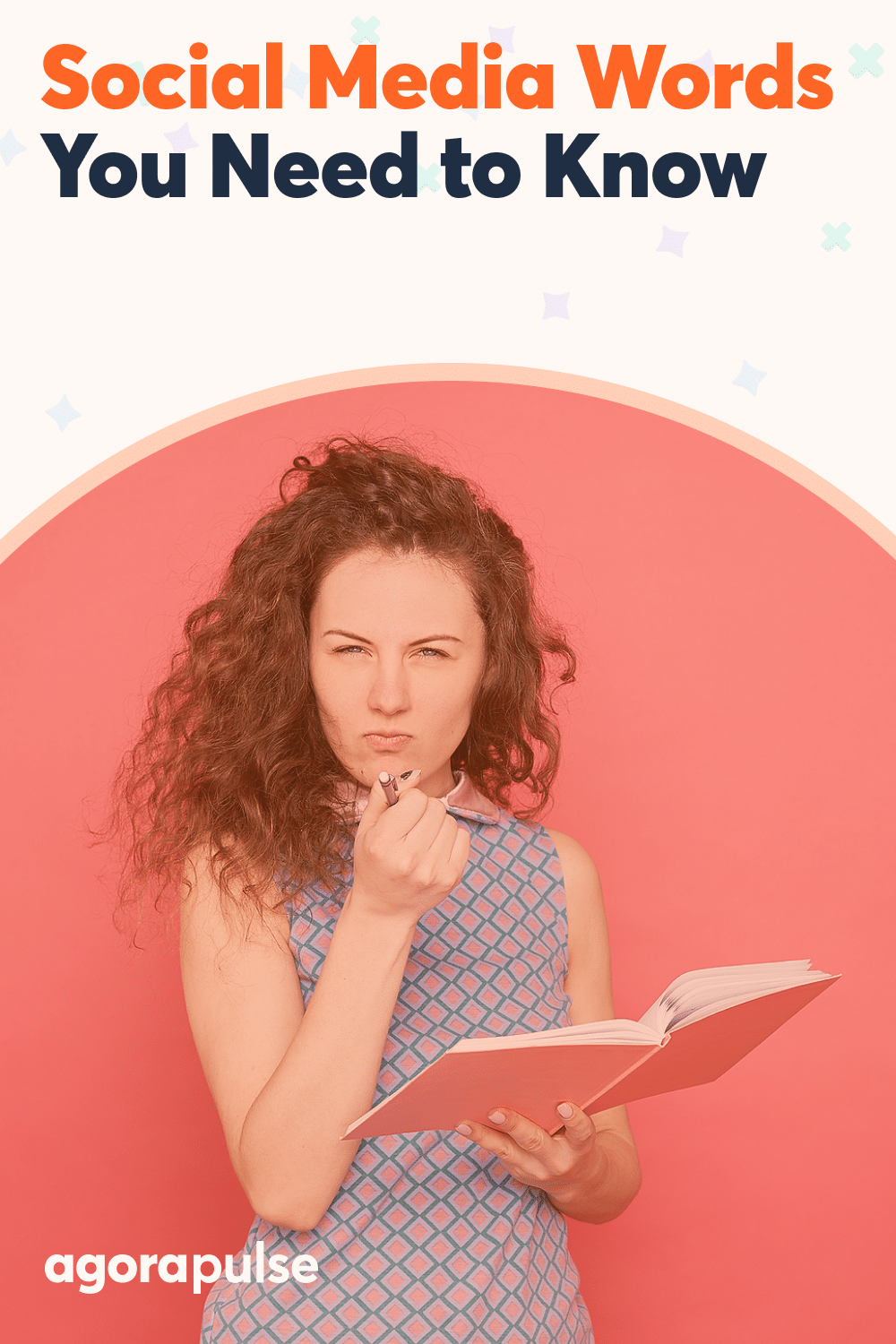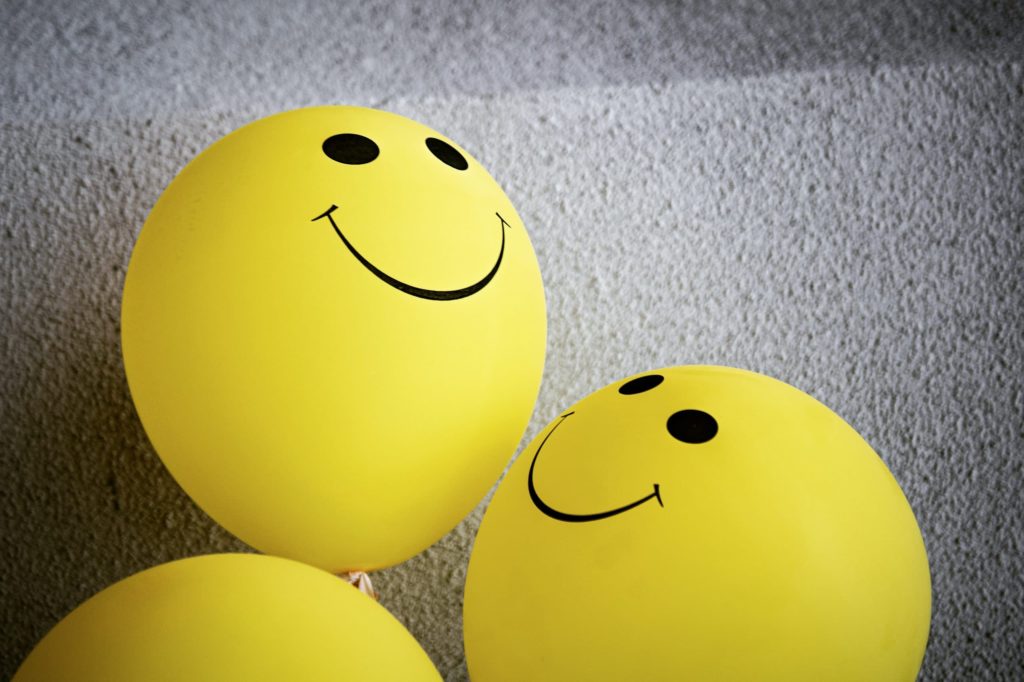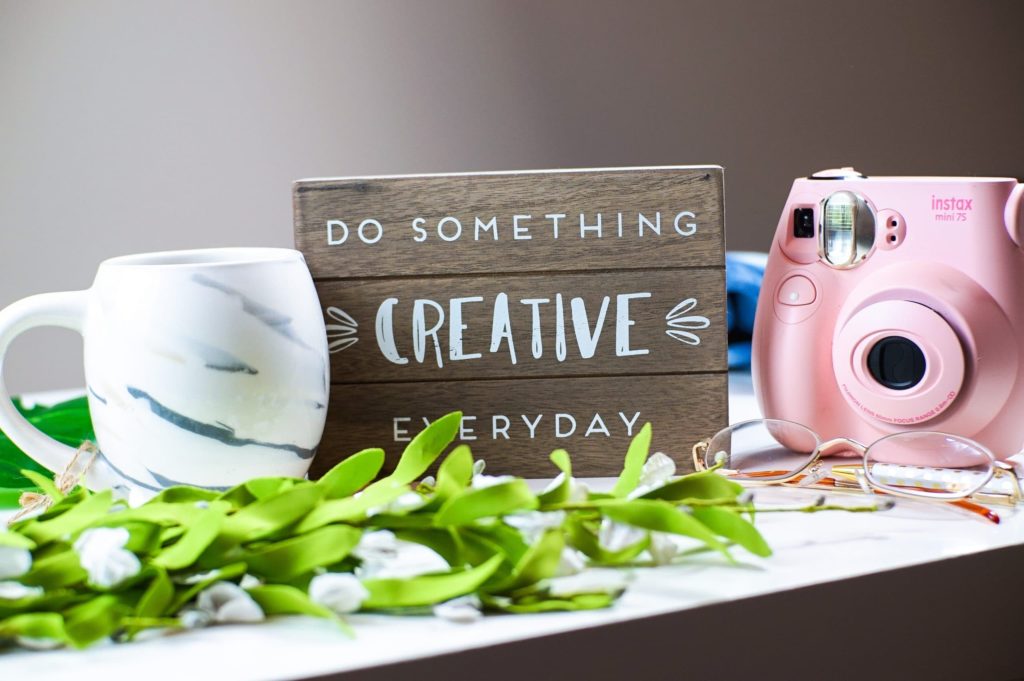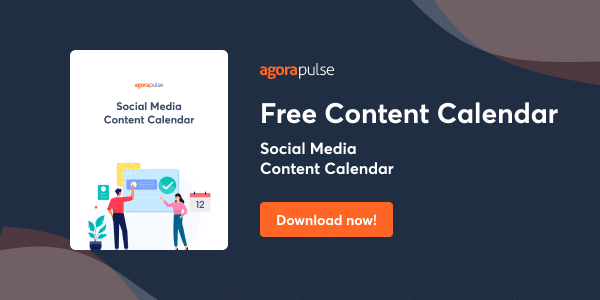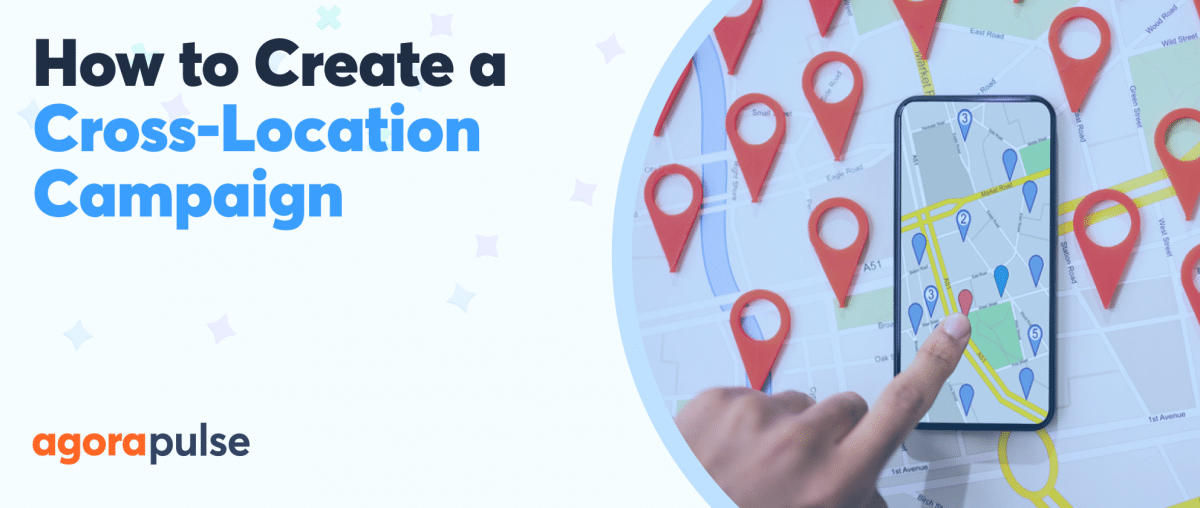Brush up on your social media terminology, and even learn some new lingo via our helpful social media glossary.
New to the world of social media? This glossary can help you better understand all the different social media terms. (You’ll be able to drop terms like a pro.)
Or maybe you’re a seasoned social media manager … but you still come across new words now and then in your workday. This glossary can help you keep you up to date with the latest terms as well. (And of course, we’ll be adding to this social media glossary as new terms come into existence.)
#
This symbol has been called plenty of things during its long life. It’s officially an octothorpe, and everyone on social media calls it a “hashtag.” (Back in the olden days known in the 1980s, it was called a pound sign and could be found on a telephone. A telephone is … oh, never mind.)
A hashtag is used right before a word to help categorize content on social media channels. (And to be ironic when used in emails or offline conversations.)
For example, #socialmediamanagement on Twitter will help you find content specific to social media management in that channel. And if you used that hashtag in your social posts, it’ll mark your content, so other users on the platform can discover your posts on the specific topic.
More info about hashtags:
- Quick Tips for Making the Most of Your Hashtags
- Should You Use Your Industry’s Most Popular Hashtags or Get Creative?
A
Agorapulse
The best social media platform out there. (Is that biased?)
Ah, you want to know the origins of our name … “Agora” is what ancient Greeks used to mean “a public square for sharing ideas.” (The ancient Greeks were no slackers in discussing ideas and getting things done.) “Pulse” is a vibration of sound, light, etc. Put those words together (and lowercase the “p’), et voila*: Agorapulse.
* French for “there you go.” Agorapulse is a Paris-based company.
Algorithm
An algorithm is a series of steps used to solve a specific problem.
In social media, an algorithm varies by platform. (For example, how Facebook ranks posts is different than how, say, Instagram’s feed work.) Algorithms are constantly changing in social media, so social media managers and digital agencies need to constantly keep updated on algorithm changes.
More info about this social media terminology:
- Google’s BERT Update: Embracing Customer-Centric Conversational Marketing
- How to Tell the Instagram Algorithm That You’re Awesome
Analytics
Analytics is all the data (and the study of the patterns in the data) found in websites and social media platforms.
That data can be gathered via a tracking tag or cookie. Analytics include when users begin their visits to a site, what pages they visit, how long they stay on the page, what they interact with on the stage, when they leave, etc.
More info about analytics:
- Social Reporting Metrics That Really Matter
- Give Your Content an Extra Boost With Data From Your Social Media Report
- A Quick Start Guide to Social Reports
API
An API is an initialism for an application programming interface. An API lets two platforms or applications communicate with one another.
B
Brand advocate
This customer really, really, really likes you. A lot. And this person talks up your brand.
A brand advocate is literally “a helper” that shares positive reviews about your company, extols its virtues, shares excitement about upcoming events, posts content about your brand, and, at the core, cares about your brand’s well-being.
Sometimes, brand advocates are paid. But most would do all the talking-up for free. (Did we mention they like you a LOT?)
Brand authenticity
Customers (existing and potential ones) want brands to be real. No fluff, no smokescreen.
Brand authenticity is the “realness” of a brand. It gauges whether a brand practices what it preaches and if it really cares about its potential and existing customers.
Brand authenticity includes a brand voice (how your brand “sounds”) and brand engagement (how a brand interacts with its audience).
Branding
Branding is how your brand presents itself and how people perceive it.
Branding will include a company’s design, logo, colors, brand voice, tone, abbreviations for the company name, and style. (Those elements will often be detailed in a brand style guide.)
More info about branding:
Business objective
What does a business specifically want to achieve? That goal is called a business objective. It’s at the forefront of a company, driving it to succeed (even when everything’s going great because improvements can always be made).
More info about business objectives:
C
Call-to-action (CTA)
A call-to-action is the wording that encourages people to take action. (You’re calling them to action … See what I did there?) This term is often known by its initialism: CTA.
Some examples:
Download your ebook about social media goals today!
Find out more about how you can manage your social media without stressing out!
More info about calls-to-action:
- How to Write Social Calls-to-Action That Really Move Your Audience
- Your Social Media Content Marketing Checklist
Carousel
Think of carousels, and you probably picture a rotating circular platform at a park. If you’re in social media, you’ll think of rotating pictures. (That imagery totally works.)
Carousel ads combine various videos and/or images into an ad.
Carousels are a collection of content in a “rotating” post.
More info about carousels:
- 4 Great New Instagram Carousel Examples Chosen by Social Media Experts
- Instagram Carousel Best-Practices to Make Your Audience Stop Scrolling and Start Engaging
Character count
How loquacious do you want to be? More inclined to be reticent?
How wordy you get on your social media posts often depends on the word count for a social media channel.
Some social media channels let you write a lot (we’re looking at you, Facebook). Others have definite limits (hi there, Twitter).
In crafting social media posts, social media managers need to take into account what the character count is. (Remember: A character count very often includes spaces, punctuation, and, yes, numbers.)
You don’t have to use every inch of space for your post, but you do need to be smart about characters used.
More info about character count:
- Does LinkedIn Post Length Matter?
- Twitter Increased the Character Count to 280: Is That a Good Move?
Chatbot
Also known as messenger bots, these bits of software use artificial intelligence to respond to messages sent on social media, websites, and more. Brands can use chatbots to provide customer service and to gather data.
More info about chatbots:
- Should I Be Using Social Media Chatbots?
- Why Your Business Should be Using Facebook Chatbots for Messaging
Clickbait
You’ll be shocked by this definition! You won’t believe what clickbait really is!
That sensationalistic headline to get you to click on substandard content? That’s clickbait.
The heydays of clickbait have long passed (and may they remain gone forever). Many social media channels set some serious guidelines to purge their channels of this weak SEO grab. But you can still see them around. (We hope not on your channels!)
More info about this social media terminology:
- 5 Rules You’re Probably Breaking with Facebook Page Management (includes a section on clickbait)
Click-through rate (CTR)
How often do people click on an ad or link or email? CTR is the metric that lets you know.
CTR is the number of unique clicks your ad or campaign received divided by the number of times it was shown (impressions).
Community management
Community management is the art of building up online (and offline) relationships among people holding an interest (or a few) in common. It’s the fine art of letting everyone be heard and yet being respectful, of listening, of sharing information … All those hard and soft skills unite to achieve the goal of a rich, vibrant, and growing community.
More info about community management:
- How to Manage Your LinkedIn Community Without Feeling Completely Overwhelmed
- 13 YouTube Community-Building Hacks You Never Knew About
- Keep Your Facebook Group Fresh and Active With These Five Tips
Content
Content is both simple and difficult to define.
The simple definition: All the assets (video, text, social posts, graphics, images, ebooks, etc.) that is produced for a company or brand is content.
The difficult definition: Content is the element (video, text, social posts, graphics, images, ebooks, etc.) that help tell a brand’s story. And that engages viewers and readers. And provides helpful insights. And offers the needed information. And that answers your customers’ questions. And that is purposeful. And educational. But not always. And entertains. But not always.
See? The term is so broad. At its broadest definition, content is the “stuff” that a company produces and/or shares. (If you need ideas for social media content, download this social media calendar, which has fabulous ideas and examples.)
Content curation
Content creation is when you find (whether actively searching or stumbling across) some fabulous content … and you want to share it in your own channels.
What makes this “curation” is that you provide the proper links to the original source material and do all the proper attributions. (Because you’re an honest, good person.)
More info about content creation:
- Let’s Be Clear on Content Creation vs. Content Curation
- How Content Curation Can Help Grow Your Business
Content marketing
Content marketing is producing content with a broader, more strategic mindset. It’s content with a plan running through it. Ideally, all content should be part of a plan. (Why produce it without knowing its purpose?)
More info about content marketing:
- Three Successful Strategies to Help Your Agency Start Integrating Social and Content Like the Pros
- How Content Curation Can Help Grow Your Business
Cost per click (CPC)
Cost per click is a form of advertising in which a company pays every time a person clicks on an ad.
More information about CPC:
- Is Your Social Media Marketing Budget Ready for the New Year?
- The Battle of Facebook vs. Twitter Ads: Which One Has the Lower CPC?
Call center
The in-house or outsourced service that answers the phone number listed in your social media posts. Learn more about different types of call centers.
D
Dark social
Dark social is private communication among users through private messages, texts, and emails. These social interactions are not readily tracked to a known source. Hence, “dark social.”
More info about dark social:
Dashboard
Think about your car dashboard. The info you need to keep that car running is there right in one easy-to-view place.
The same is true for a platform’s dashboard. You get so much info on one screen. That includes reporting, monitoring, analytics, publishing, etc. (Especially on—shameless plug—Agorapulse.)
More info about social media dashboards:
Direct message (DM)
A direct message (DM) is a private message between users on a specific platform. (Being private, the message is unseen by other people on the platform.)
DMs are ideal in situations where a brand/company/person wants to dialogue about business opportunities, clarify something, address grievances, and just not have everyone (and their mother) listening in.
E
Emoji
An emoji is a little image that can be used across myriad forms of digital platforms. It conveys emotions. Once reserved for basic texts between people, emojis are used in everything from email subject lines to signage and even a movie (?).
More info about emojis:
Employee advocacy
The biggest supporters for your company are within it: your employees. When brands harness the power of their employees for sharing content online (that’s called employee advocacy), amazing things happen.
More info about employee advocacy:
Engagement
To engage is to involve. Engagement in social media is to involve people in a conversation, in an interaction. This engagement can take place through comments, DMs, Q&As on Facebook, emails, live events, and wherever a brand and a person meet.
More info about engagement:
- 11 Quick Tips to Help Boost Your Social Media Engagement [Infographic]
- Use Instagram Memes to Increase Customer Engagement (and Share Your Sense of Humor)
- 11 Twitter Bio Ideas to Get More Followers and Engagement
Evergreen content
When you think of evergreen, do you think of something long-lasting like, say, an evergreen tree? (I personally think of the line from the Ed Sheeran song: “‘Cause your soul, honey, can never grow old; it’s evergreen.” And that also works for this glossary entry.)
Evergreen content (like an evergreen content and a love ballad by Ed Sheeran) doesn’t get old. It lasts and lasts, garnering attention almost seemingly effortlessly. The timelessness of the content is what makes it endure.
It only needs a little spritz and updating now and then.
More info about evergreen content:
F
Do we really need to define what Facebook is?
All right—the social media platform Facebook launched in 2004, originally as a means of communication among Harvard students. It was a very basic student directory: photos, some personal information. Facebook later branched out to other university students. And branched out some more. And more. As of December 2019, Facebook has 2.50 billion monthly active users.
Facebook has gone far beyond the student directory to include newsfeeds, videos, live shows, advertising, timelines, apps, and much more.
More info about Facebook:
- Facebook 101: What Every Smart Social Media Manager Needs to Know
- What Does a Facebook Sales Funnel Look Like?
Facebook advertising
Advertising on Facebook is called … Facebook advertising. You can create and run ad campaigns on Facebook using a variety of tools. (But you’ll only want to do so once you’ve firmed up your Facebook ad objectives.)
Sounds easy enough, but a lot of social media managers and digital agencies struggle with Facebook ads. Read on for help with your Facebook ads.
More info about Facebook advertising:
- Finally! Facebook Advertising That Won’t Drive You Batty
- Facebook Collection Ads: The High-Converting Ad Format You Need to Use
Facebook boost post
Feeling like your post isn’t getting enough attention on Facebook? You’ll probably feel the urge to hit the Boost Post button. It’s a way to create an ad based on your Facebook Page.
Should you use it? Not? Read on for advice against using it … and for some thoughts about why doing so may not be that bad.
More info about the Facebook Boost button:
- The Facebook Boost Button Is (Still) a Terrible Idea
- How to Start With Facebook Ads and More Expert Advice From the Digital Gal (Facebook expert Amanda Robinson has good advice for people who want to use Boost posts in this interview.)
Facebook group
Drawing members with common interests, religions, hobbies, locations, sports affiliations, and so forth, a Facebook Group enables communication among them. They can share content, comment on each other’s posts, etc. Anyone can set up and manage one’s Facebook Group. Also, unlike Facebook Pages, groups can be private.
More info about Facebook Groups:
- 5 Facebook Group Features You Might Not Know About (But Should)
- Keep Your Facebook Group Fresh and Active With These 5 Tips
- How to Attract More People to Your Facebook Group
- How to Strategically Post to Facebook Groups With Agorapulse
Facebook live
On April 6, 2016, Mark Zuckerberg launched the very first Facebook live broadcast. It’s a video streaming service that lets you engage with your audience.
More about Facebook Live:
- FREE Guide to Facebook Live
- How to Start a Facebook Live: Tips for Before, During, and After Your Broadcast
- You Know You Need These Facebook Live Tips
- Should I Use Facebook Live or Prerecorded Video?
Facebook messenger
In 2010, Facebook redid its Facebook Chat (launched in 2008), a messaging app and platform. This usually goes by Messenger.
More about Facebook Messenger:
- A Step-by-Step Walk Through Facebook Messenger Rooms
- Facebook Messenger Business Examples: Our Social Media Expert Roundup
- The Do’s and Don’ts of Setting Up a Facebook Messenger Chatbot
Facebook share
When a Facebook user wants to share a post from another Facebook user, that person hits the Facebook Share button.
G
Geotag
Users who want to share content with specific geographic audiences can do so with a feature called “geotargeting” on many social media platforms.
H
Handle
The name you use to represent yourself on Twitter or Instagram or other social media channels. It follows the at (@) symbol (e.g., @agorapulse).
Hashtag
same entry as # (the hashtag symbol)
This symbol has been called plenty of things during its long life. It’s officially an octothorpe, and everyone on social media calls it a “hashtag.” (Back in the olden days known in the 1980s, it was called a pound sign and could be found on a telephone. A telephone is … oh, never mind.)
A hashtag is used right before a word to help categorize content on social media channels. (And to be ironic when used in emails or offline conversations.)
For example, #socialmediamanagement on Twitter will help you find content specific to social media management in that channel. And if you used it in your social posts, it’ll mark your content, so other users on the platform can discover your posts on the specific topic.
More info about this social media terminology:
- Quick Tips for Making the Most of Your Hashtags
- Should You Use Your Industry’s Most Popular Hashtags or Get Creative?
Header image
The top banner image that is on a user’s social media page is called a header image. (This image sometimes gets called a “cover photo.”)
I
Inbound marketing
Inbound marketing is about attracting potential customers (leads) to you through the content you create, including blog posts, ebooks, webinars, videos, SEO-rich text, etc.
More info about inbound marketing:
- Four Ways to Capture More Leads Through Organic Social Media Traffic
- Need-to-Know Facts From the State of Social Media Lead Gen Report
Influencer
Someone in your industry who can influence your target audience is called an influencer.
An influencer often has special insight into a specific subject and already have developed an impressive social media presence.
More info about this social media terminology:
- How to Find the Right Instagram Influencers for Your Brand
- 7 Signs That Your Social Media Influencer Relationship Is in Trouble
Influencer marketing
Do you have an influencer promoting and selling your products and services via their sphere of influence? That’s the short definition of influencer marketing.
More info about influencer marketing:
Infographic
An infographic is a visual representation of ideas through images and text. A true infographic isn’t a cool background with text on it. (Nope, that’s just lazy design.)
A true infographic has images and texts that work together to present ideas.
More info about infographics:
Launched in 2010, Instagram is a photo- and video-sharing social media platform. Users use filters to enhance their content. Instagram consists of the Instagram feed (the photos), Instagram Live, Instagram Stories (videos), and Instagram TV (IGTV).
More info about Instagram:
- Instagram 101: What Every Smart Social Media Manager Needs to Know
- 7 Instagram Myths That Even Smart Social Media Managers May Believe
- Instagram Marketing Tips to Capture Attention and Stop That Constant Scrolling
Instagram caption
Though Instagram is primarily about visuals, the words underneath the image (the caption) plays an important part in getting users engaged. Hashtags are also added to the caption, so users searching for a specific topic can find related posts.
K
KPI
A KPI is a key performance indicator. A company sets KPIs to measure whether a campaign or business endeavor hit the mark.
More info about KPIs:
- 5 KPIs That You Can Get From Agorapulse’s LinkedIn Reports (and Why They Matter So Much)
- Should My Business Bother to Have Social Media KPIs?
L
LinkedIn is a social media platform used primarily for professional networking.
Well, at first.
It has since expanded to be a resource for LinkedIn videos and LinkedIn Live streaming. Now, not just job-hunters are on LinkedIn. Your neighbor, that cousin of yours, a frenemy, someone from high school who you’d like to know what happened to them but didn’t ask at the reunion … Yeah, they’re all on LinkedIn. (Which makes standing out on LinkedIn via your profile difficult but not impossible.)
More info about LinkedIn:
- LinkedIn 101: What Every Smart Social Media Manager Needs to Know
- How to Create Amazing LinkedIn Videos Starting Today
- How to Get Your LinkedIn Articles Read by More People
- How to Create a LinkedIn Profile That Makes You Stand Out From the Crowd
Live streaming
Live streaming is about video that is simultaneously recorded and broadcast is known as live streaming video. Many social video platforms allow for live streaming.
More info about this social media terminology:
M
Marketing automation
Marketing automation refers to using specialized software to automate marketing functions. They do the tedious, repetitive work, so you don’t have to. (Who has time for all that?)
More info about marketing automation:
- Social Media Automation: How to Do It Well and What to Avoid
- Follow These Facebook Ad Automation Steps (If You Dare)
Marketing funnel
The customer journey, from when a person finds out about a business all the way to the actual purchase, is known as a marketing funnel.
More info about marketing funnels:
Meme
An image that’s copied and slightly altered to make a point that spreads online.
Here’s a classic from the meme vault:
Online users changed the image, but the idea was there: Ryan Gosling saying “hey girl” and something that’d make him sound like the perfect boyfriend.
More info about memes:
N
Newsjacking
Breaking news? Hurry, jump on it (if it’s relevant to what your company does), and share your insights to get tons of social media engagement. But you have to be careful about how you do it and whether it’s appropriate.
(Marketing strategist David Meerman Scott coined the term and literally wrote the books on it.)
Notifications
A text message or update letting you know about activity on social media, such as someone liking your post or sending you a DM.
O
Open graph
Open Graph is an API (application programming interface) that lets Facebook users see how well their content is performing.
Organic reach
You didn’t have to pay for any promotion—but users saw your content anyway! They organically found it via newsfeeds, pages they’ve liked, etc.
Outbound marketing
Outbound marketing is marketing in which the company makes the first move in establishing a relationship. This form of marketing includes cold calls, traditional advertising (TV commercials, for example), and direct mail.
P
Launched in 2009, Pinterest is an online pinboard. (That’s the simplest definition.) Users can upload, save, and sort images (“pins”) in collections called Pinterest boards.
More info about Pinterest:
- Pinterest 101: What Every Smart Social Media Manager Needs to Know
- Pinterest for Business: How to Go Beyond Pretty Pins and Engage More Customers
- Four Pinterest Marketing Techniques to Put Into Practice Right Away
Potential reach
Potential reach is the highest possible amount of people in a specific network that can be reached.
Promoted tweet
Promoted tweets are like regular tweets, except they are purchased by advertisers to reach a bigger group of users or grab attention from their existing followers.
Q
Quora
Founded in 2009, this website is all about the question-and-answer format. Quora users ask questions, and other Quora users give an answer. (That answer can be based on facts or opinions.)
R
A very popular website focusing on entertainment, news, and issues. Users submit content and then vote on each other’s content.
Regram
Liked the content you saw on Instagram? If you shared it with others, you just made a regram (with proper attribution to the original source, we hope). Some people call this a “repost.”
More info about this social media terminology:
Retweet
Did you share someone else’s tweet on your own Twitter account? Then, you retweeted.
S
Scheduling
Rather than do off-the-cuff social posting, you can schedule your social media posts. You plan them ahead, get them ready to go, and let your social media management tool take care of the rest.
More info about scheduling:
- What to Look for in a Social Media Post Scheduler
- Avoid These 10 Big Mistakes When You Schedule Social Media Content
- 5 Reasons Why Scheduling Instagram Push Notifications Is a Good Idea
Selfie
Snap a pic of yourself on your phone and share it … That’s your self-portrait. That’s a selfie!
SMART Goals
SMART goals are the opposite of dumb goals. Literally, that’s true. Goals created without focus, purpose, or any sort of thought are rather foolish. However, SMART goals are specific, measurable, attainable, relevant, and timely. (Put the first letter of each of those, minus “and,” and you get … SMART.) These goals really help social media managers get stuff done … in a realistic, measurable, and effective way.
More info about SMART goals:
Social listening
Social listening is, well, listening to conversations on social media. You find conversations online.
More info about social listening:
Social media agency
A company that provides services for social media management, social media strategy, paid social implementation, influencer outreach, and other facets of social media marketing. (Sound like your cup of tea? This thorough guide can help you start your own social media agency.)
More info about social media agency:
- How to Choose the Righ Social Media Marketing Agency
- Survival Tips for a Social Media Agency in a Tough Sector
- How to Get More Clients for Your Social Media Agency
- How to Start Your Own Social Media Agency: Step by Step
Social media automation
There’s so, so much to do, from publishing posts and engaging with followers to monitoring metrics and creating reports when you’re a social media manager.
Social media automation saves time and frees up one’s schedule for more high-level strategy.
More info about social media automation:
Social media calendar
An organized document (whether a spreadsheet, online tool, app, or good ol’ paper calendar) that tracks what social media content you will publish is a social media calendar. That’s it at its most basic. But it can also include hashtags to use, image files, UTM links to use, uplinks, downlinks, backlinks, etc.)
Social media campaign
A social media campaign is a “series of efforts designed around a specific marketing goal.” The campaign requires a clear, set objective, runs a timely path, and includes one or more social media platforms.
More info about social media campaign:
Social media management
Social media management is the managing of content and interactions across social media platforms. It can involve social media listening, monitoring, publishing, engaging, and reporting.
More info about social media management:
Social media manager
Nope, being a social media manager doesn’t mean being on Facebook all day. (Even if your friends think that’s what being one is.)
A social media manager is responsible for a brand’s interactions with customers, content sharing (and in some cases, content creation), and social media campaigns. Phew, it’s a big job … and every business really needs a social media manager, especially during a crisis. (Because it’s such a huge responsibility, social media managers often have to be very mindful not to burn out and to actually find a healthy work/life balance.)
More info about social media manager:
- What Is a Social Media Manager? (And What Does One Really Do?)
- 10 Vital Skills for Social Media Managers to Have
- ‘Secret’ Social Media Manager Skills Needed for Success
- How to Become a Social Media Manager: 18 Experts Share Advice
- 7 Ways Social Media Managers Can Publish Smarter
- 7 Instagram Content Ideas for Creatively Blocked Social Media Managers
Social media marketing
Social media marketing is using social media channels to help a business grow. It includes increasing brand awareness, generating leads, and making positive interactions with customers.
More info about social media marketing:
- Social Media Marketing 101: What Every Smart Social Media Manager Needs to Know
- Does Your Social Media Marketing Checklist Include These Crucial Tasks?
Social media marketing tools
Social media managers have so, so much to do … and tools can help them do their job better, faster, and happier-y. (I made up that last word, but it feels like it should exist.) Some tools are paid and worth it. Some are paid and not worth it. Some social media tools are free, and you’d pay for them if you had to because you love them so much. We write a lot about tools. ?
More info about social media marketing tools:
- Free Social Media Marketing Tools You Should Try
- 7 Things to Look for in a Twitter Management Tool
- 4 Twitter Analytics Tools You Can’t Ignore
- 20 Free Social Media Tools for Social Media Managers
- 10 Instagram Marketing Tools to Grow Your Business
- 7 Hashtag Search Tools That Are Crazy Easy to Use
- Top Social Media Scheduling Tools
- 20 Work From Home Tools We Love Right Now
Social monitoring
Monitoring allows you to be alerted to trends, hashtags, and key influencers and ambassadors — but without the clutter of newsfeeds and steams of irrelevant content.
Social media policy
A social media policy is a document (guide, ebook, Google doc, etc.) that clearly defines how employees of a specific organization should behave online. (Sure, some of it may be common sense, but, as the saying goes, “common sense is not that common.” Plus, social media channels are like a box of chocolates; social media managers never know what they’re going to get—so they should be prepared for every scenario. Even pandemics. (Forrest Gump may have said that but slightly differently.)
More info about social media policies:
T
Tag
A keyword in a social media post that categorizes it. Tags also can apply to people in a post. By tagging users in a post, you link to them and bring their attention to your post.
Troll
Argh, trolls in fairy tales may live under bridges, but in social media, trolls live in deliberately offensive posts.
More info about trolls:
Twitter is a social media platform for microblogging and social networking. The short messages are known as “tweets.” They are posted, liked, reposted, and also feature hashtags, so users can follow trends and online conversations on a specific topic.
More info about Twitter:
- Twitter 101: What Every Smart Social Media Manager Needs to Know
- Start Growing Your Twitter Profile With These Tips and Tricks
- How to Get Twitter Stats You Can Really Use
- 7 Things to Look for When Looking for a Twitter Management Tool
Twitter list
On Twitter, users can make their own lists of Twitter accounts to follow. They can name those lists as well. Instead of reading a newsfeed from all those you follow on Twitter, you can read a curated Twitter list that hones in on a select group of accounts.
More info about Twitter lists:
- What Is a Twitter List? (And Why You Should Make One)
- Can Twitter Lists Help Your Productivity? They Sure Can!
Twitter verification
The blue checkmark following a Twitter’s user name lets users know that the account has been verified and is legit. (That little ol’ checkmark makes it easier to know whether the celebrity you follow is really that person.)
U
UTM code
To track the performance of your social media campaigns, this snippet of code is added to the end of a URL.
More info about UTM codes:
URL shortener
Some URLs get really unwieldy and need to be shortened. Or a user wants to add a URL in a post and still meet the character count, so the URL needs to be shortened. If so, a URL shortener, like Bitly, condenses the URL into something more manageable.
User-generated content (UGC)
User-generated content is all that fantastic (and, OK, maybe not always so fantastic, but it’s earnest!) content that users make in their enthusiasm and love for a company.
More info about user-generated content:
- How to Inspire More User-Generated Content for Your Brand
- The Six Best Ways to Showcase User-Generated Content on Social Media
V
Vanity metric
Metrics that can be gathered but don’t really provide any return on investment are vanity metrics.
Sure, the number of likes on your Facebook post may be astronomical, but they don’t mean anything if all the users are doing is liking and nothing more.
More info about vanity metric:
Viral marketing
That YouTube video everyone has seen about a product? That meme on Instagram that everyone knows? Those are examples of viral marketing, content that has spread far and wide in a short amount of time.
Y
YouTube
The most popular video-sharing website, YouTube lets users upload, view, and share videos (as well as comment on them).
- YouTube 101: What Every Smart Social Media Manager Needs to Know
- How to Get More Views on YouTube: Tips and Tricks for Social Media Managers
- YouTube Playlists: Are You Neglecting This Marketing Powerhouse?
- Don’t Miss Out on These Big Opportunities to Grow Your Business via YouTube
- How to Use YouTube for Brand Building in Six Easy Steps
* * *
Get started on saving time and energy on your own social media management! Check out our free trial of Agorapulse to help you schedule, track, and measure all your social media efforts.
